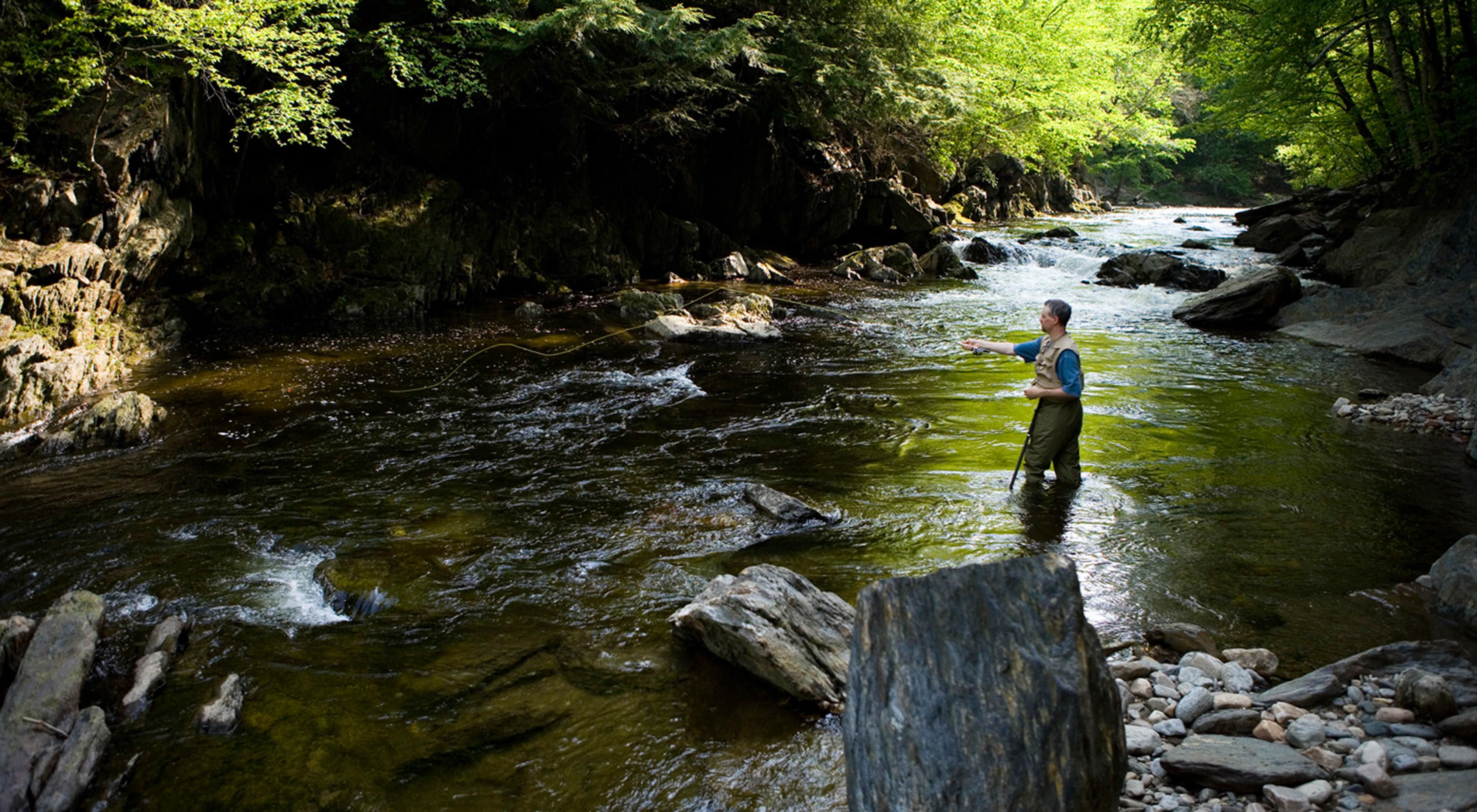Description
The fast, cold Salmon River drains a 96,000-acre watershed in 10 towns. Experts have ranked the Salmon as the best example of its river type in Connecticut, and U.S. Fish & Wildlife Service (USFWS) recognizes it as a Special Focus Area for fisheries and one of three federal Atlantic salmon restoration areas in Connecticut.
A variety of migratory fish use the River and its tributaries, and high-quality coldwater fish habitat makes it one of the state’s top trout streams. The Salmon also is prized for its water quality, which sets the standard for the entire Connecticut River basin.
The River supports a diversity of mussels and other benthic (bottom-dwelling) animals and mammals such as river otter, which requires at least five miles of intact riparian habitat. Salmon Cove, an expansive freshwater tidal marsh that comprises the lower portion of the River, harbors rare species, important fisheries, waterbirds, and unusual habitats. The cove, and other sections of the river, provides important winter habitat for Bald Eagles.
The State has invested heavily in fisheries management and land acquisition in the area, and the USFWS Silvio Conte Refuge recently identified the lower Salmon as an area of focus for federal land acquisition.
The Salmon River Program also includes the Meshomasic Forest Landscape, comprised of a significant large forest located in Portland, Glastonbury, and East Hampton. Meshomasic State Forest is New England’s oldest state forest and is home to one of a dwindling number of timber rattlesnake populations found in Connecticut.
Additionally, the 17,500 acre forest provides habitat for many bird species and mammals such as the bobcat and fisher. The name Meshomasic comes from rugged, rocky Meshomasic mountain, which provides habitat for rattlesnakes. Meshomasic is believed to be an Indian name for the “place of many snakes” or “the great snake.”
